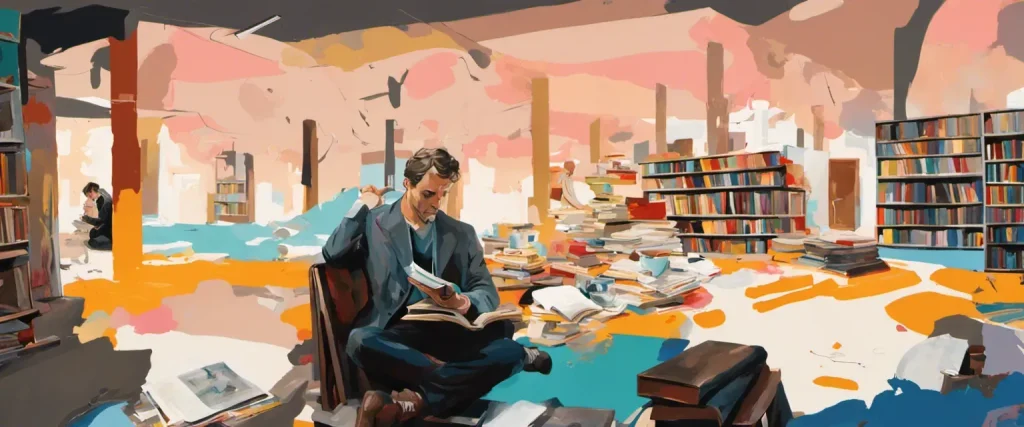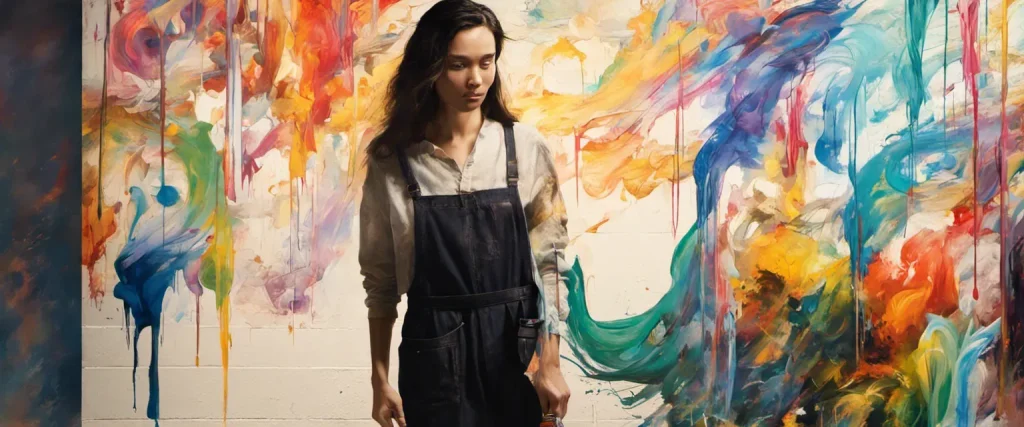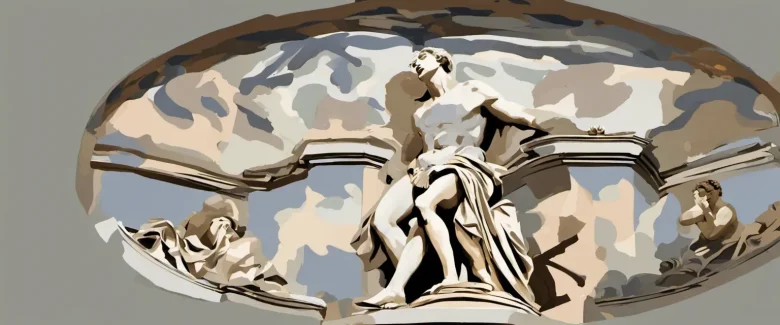In his historical novel, “The Agony and the Ecstasy,” Irving Stone takes readers on an enthralling journey into the life and artistic genius of one of history’s greatest masters, Michelangelo Buonarroti. Set against the backdrop of Renaissance Florence, this captivating tale unravels the inner struggles and triumphs of a man driven by an insatiable passion for sculpting, painting, and architecture. Steeped in meticulous research, Stone’s narrative explores the intricate relationship between artistry and the torment of creation. Known for his ability to breathe life into the lives of iconic figures, Irving Stone was an esteemed American author whose works often focused on the intimate stories behind great artists and explorers. With “The Agony and the Ecstasy,” Stone delivers yet another extraordinary literary masterpiece.
Chapter 1: Michelangelo’s Early Years
Chapter 1 of “The Agony and the Ecstasy” by Irving Stone explores the early years of the renowned Italian artist Michelangelo Buonarroti. The chapter primarily focuses on his childhood, family background, and his growing passion for art.
Michelangelo was born in 1475 near the small town of Caprese in Italy. His family belonged to the minor nobility, but they faced financial struggles. His father, Lodovico Buonarroti, was a stern and inflexible man who worked as the mayor of Caprese. Michelangelo’s mother, Francesca, was a warm and nurturing presence in his life.
From an early age, Michelangelo exhibited a strong inclination towards art. He was drawn to the beautiful landscapes surrounding his hometown, spending hours observing and sketching the natural world. Recognizing his talent and passion, his father arranged for him to apprentice with Domenico Ghirlandaio, a renowned painter in Florence.
Michelangelo’s time with Ghirlandaio was crucial for his artistic development. He quickly grasped the technical aspects of painting but became restless, feeling confined within the boundaries of the art form. His ambition pushed him toward sculpture, which he believed to be a superior and more expressive medium.
Despite his own doubts, Michelangelo’s talent and determination earned him the patronage of Lorenzo de’ Medici, the ruler of Florence. This opportunity provided him access to the esteemed sculpture garden of the Medicis, where he studied classical works of art and developed his own unique style.
Overall, this chapter highlights Michelangelo’s humble beginnings, the influence of his family, and his unwavering dedication to pursuing his artistic vision. It sets the stage for the challenges and triumphs that lie ahead in the life of one of history’s greatest artists.
Chapter 2: Apprenticeship with Ghirlandaio
Chapter 2 of “The Agony and the Ecstasy” by Irving Stone, titled “Apprenticeship with Ghirlandaio,” follows the life of Michelangelo Buonarroti as he begins his artistic education under Florentine artist Domenico Ghirlandaio. This chapter explores Michelangelo’s introduction to the world of art and his journey towards becoming a successful artist.
At the age of thirteen, Michelangelo is sent to learn from Ghirlandaio, a renowned fresco painter. Initially, Michelangelo struggles to adapt to the strict discipline and demands of his new mentor. He is assigned tedious tasks, such as prepping colors, grinding pigments, and copying designs. However, he quickly becomes captivated by the art of fresco and is determined to learn the craft.
Ghirlandaio recognizes Michelangelo’s exceptional talent and allows him to observe and assist with more complex projects, such as studying anatomy and copying sculptures. Despite the challenging workload, Michelangelo’s passion fuels his dedication, and he spends countless hours honing his skills.
During his apprenticeship, Michelangelo encounters various individuals who shape his artistic development. These include Bertoldo and Lorenzo de’ Medici, influential figures in the art world who expose him to classical sculptures and inspire his pursuit of perfection in his creations.
While Michelangelo’s talent flourishes under Ghirlandaio’s guidance, he becomes frustrated by his mentor’s limited vision and traditional methods. He yearns for more freedom and the opportunity to discover his own style. This desire for self-expression foreshadows the conflicts and struggles he will face throughout his career.
Overall, Chapter 2 portrays the foundational period of Michelangelo’s artistic journey. It demonstrates his commitment, perseverance, and early encounters with influential figures that will shape his artistic drive and propel him towards becoming one of the most celebrated artists of the Renaissance.
Chapter 3: The Medici Influence
Chapter 3: The Medici Influence explores the impact of the powerful Medici family on the artist Michelangelo Buonarroti. The chapter delves into the Medici’s family background and their cultural significance in Florence during the Renaissance.
The Medici family, led by Lorenzo de’ Medici, plays a significant role in shaping Michelangelo’s early artistic career. Lorenzo recognizes Michelangelo’s exceptional talent at a young age and becomes his patron, providing him with financial support, education, and exposure to the city’s intellectual elite. Influenced by this prestigious association, Michelangelo gains access to rare classical texts and is introduced to prominent artists and thinkers, stimulating his artistic development and broadening his cultural horizons.
Under the Medici’s influence, Michelangelo embraces the philosophy of humanism, a movement that emphasizes the importance of individualism and the pursuit of knowledge. He becomes deeply inspired by ancient Roman and Greek art, absorbing their techniques and aesthetic principles. Through Lorenzo’s patronage, Michelangelo receives commissions to create sculptural works for the Medici family, enabling him to further refine his skills.
The Medici family’s patronage also provides Michelangelo with opportunities beyond Florence. Following Lorenzo’s death, his son, Giovanni, invites Michelangelo to Rome, where the artist creates his first major marble sculpture: the Pietà. This masterpiece cements his reputation as one of the greatest sculptors of his time, leaving a lasting impact on the Roman art scene and scoring further Medici support.
The chapter concludes by emphasizing Michelangelo’s indebtedness to the Medici family for their encouragement and sponsorship. Without their crucial support, the artist’s career may not have flourished, and Renaissance art might have been deprived of one of its most renowned and influential figures.
Chapter 4: Sculpting the David

Chapter 4 of the book “The Agony and the Ecstasy” by Irving Stone, titled “Sculpting the David,” focuses on the life of the renowned artist, Michelangelo, as he embarks on his most famous work, the sculpture of David.
As the chapter begins, Michelangelo finds himself unemployed and seeking new opportunities in Florence. Upon receiving a commission to carve a statue from a massive marble block that had been weathering for twenty-five years, he is faced with the challenge of transforming it into a masterpiece. Michelangelo agrees to the daunting task, fueled by his intense passion and desire to create something extraordinary.
Throughout the chapter, Stone provides a vivid description of Michelangelo’s creative process as he studies the marble, meticulously chisels away the excess, and gradually reveals the figure of David. Michelangelo’s determination and devotion to his craft are showcased as he puts in countless hours of work, with stone chips flying and his hands bleeding.
At the same time, Michelangelo is caught up in a web of political intrigue, as the ruling elite of Florence, the Medici family, struggles to maintain power. The artist finds himself entangled in this turmoil, as his work on David is delayed due to the political chaos around him.
The chapter concludes with Michelangelo’s triumphant moment when the massive figure of David is finally unveiled. The awe-inspiring beauty and perfect proportions of the sculpture leave viewers in awe, and Michelangelo’s name becomes synonymous with genius and talent.
In summary, Chapter 4 of “The Agony and the Ecstasy” portrays Michelangelo’s journey as he tirelessly sculpts the iconic figure of David, showcasing his unyielding commitment to his art and his ability to create beauty even amidst political unrest.
Chapter 5: The Sistine Chapel Ceiling
Chapter 5: The Sistine Chapel Ceiling of the book “The Agony and the Ecstasy” by Irving Stone is a detailed account of the artistic journey undertaken by the renowned Italian artist Michelangelo as he undertakes one of his greatest challenges – the creation of the Sistine Chapel ceiling.
The chapter begins with Michelangelo’s arrival in Rome, where he is commissioned by Pope Julius II to paint the ceiling of the Sistine Chapel. Initially reluctant due to his preference for sculpting, Michelangelo eventually accepts the challenging task. He embarks on intense research, studying the technique of true fresco and anatomy to ensure precision in his work.
As Michelangelo begins the laborious process of painting, he faces numerous hardships and setbacks. He battles with the apprentices hired to assist him, who lack his dedication and strive for perfection. Additionally, his troubled relationship with Pope Julius II adds an emotional strain, as the Pope constantly scrutinizes his progress while exerting pressure on him to complete the project swiftly.
To add to the difficulties, Michelangelo is forced to work on the vast ceiling in a physically demanding position – lying on his back, looking up. This takes a toll on his health, causing severe back pain, strained eyes, and insomnia. Yet, he perseveres, pouring his heart and soul into each stroke, meticulously portraying scenes from the Old Testament, including the creation of Adam and the Great Flood.
The chapter also explores Michelangelo’s encounter with Raphael, who was working on his own masterpiece in the Vatican at the time. The two artists engage in a rivalry, pushing each other to elevate their artistic prowess.
As the chapter concludes, Michelangelo triumphantly completes the Sistine Chapel ceiling. Despite the grueling process, his masterpiece is met with awe and admiration from both Pope Julius II and the public. The chapter showcases Michelangelo’s indomitable spirit, unyielding dedication, and genius as he leaves an everlasting legacy in the art world.
Chapter 6: Conflict with Pope Julius II
Chapter 6 of “The Agony and the Ecstasy” by Irving Stone explores the conflict between the artist Michelangelo Buonarroti and Pope Julius II during the early 16th century. At the start of the chapter, Michelangelo is summoned to the Vatican in Rome to discuss a project proposed by the Pope. The Pope offers Michelangelo the opportunity to sculpt his tomb, a grandiose idea that enthuses the artist.
However, as Michelangelo begins working on the tomb, he faces numerous challenges. The project proves to be financially and logistically demanding, and he struggles to obtain the necessary materials and labor. Additionally, Pope Julius II becomes preoccupied with military campaigns and political matters, diverting funds away from the tomb’s construction.
As tensions rise, Michelangelo becomes increasingly frustrated with the Pope’s lack of focus and inconsistency. The artist seeks solace and inspiration in the pursuit of other artistic endeavors, such as painting the Sistine Chapel ceiling. Here, he finds freedom and expression that is lacking in his dealings with the Pope, and the project becomes a testament to his creativity during a time of conflict.
The chapter highlights the clash of personalities between Pope Julius II and Michelangelo. While Julius II is a powerful and ambitious leader driven by political and military matters, Michelangelo is an artistic genius consumed by the desire to create works of beauty and significance. Their differing priorities and temperaments create friction, leading to an ongoing struggle between the artist’s artistic integrity and the Pope’s demands.
In summary, Chapter 6 of “The Agony and the Ecstasy” delves into the conflict between Michelangelo and Pope Julius II as the artist attempts to complete the tomb project while facing financial challenges and the Pope’s distracted leadership. The clash of personalities and priorities is showcased, foreshadowing the ongoing struggles that will shape Michelangelo’s artistic journey.
Chapter 7: Designing St. Peter’s Basilica
Chapter 7 of “The Agony and the Ecstasy” by Irving Stone focuses on the designing process of St. Peter’s Basilica in Rome, during the early 16th century. The chapter delves into the mind of the renowned Italian polymath, Michelangelo Buonarroti, as he undertakes the challenging task of creating a monumental structure that would become one of the most important religious and artistic symbols of all time.
Facing numerous obstacles and doubts, Michelangelo employs his immense artistic talent and knowledge to bring his vision to life. He wrestles with the practical aspects of construction, calculating dimensions, examining geological surveys, and refining his ideas. Such tasks require him to work closely with architects, engineers, and other craftsmen who contribute their expertise to the project.
Through intense reflection and study of ancient Roman architecture, Michelangelo discovers designs that he hopes will enhance the grandeur and dignity of St. Peter’s Basilica. He combines these elements with his own artistic sensibilities, aiming to create a structure that will stand the test of time.
However, the chapter also delves into Michelangelo’s inner struggles. He grapples with feelings of insecurity and self-doubt, fearing that his work may never match the perfection he envisions. Despite these doubts, Michelangelo finds solace in his art and continues to push forward.
As the chapter concludes, Michelangelo presents his final designs to Pope Paul III, hoping to receive approval and proceed with the construction of St. Peter’s Basilica. It is a crucial moment in his career and marks the beginning of a new chapter in his life and artistic legacy.

Chapter 8: Legacy and Final Years
Chapter 8: Legacy and Final Years of the book “The Agony and the Ecstasy” by Irving Stone explores the last stage of the life of Michelangelo Buonarroti, the renowned Italian artist. In this chapter, Stone delves into the legacy and final years of Michelangelo, highlighting the challenges he faced and the accomplishments he achieved.
During his later years, Michelangelo appeared disenchanted with life, plagued by the loss of friends and the constant reminder of his own mortality. Nevertheless, he continued to work on various artistic projects. His passion and dedication remained unyielding.
The chapter emphasizes the strained relationship between Michelangelo and his apprentice, Ascanio Condivi, who had written an inaccurate biography of the artist that frustrated him greatly. Despite this, Michelangelo persevered, focusing on his last great project – the completion of St. Peter’s Basilica in Rome. He dedicated much of his time and energy to this monumental endeavor, ensuring that it would stand as a testament to his artistic prowess.
Stone provides detailed descriptions of Michelangelo’s physical decline during this time and his battles with his failing health. Despite these challenges, Michelangelo’s spirit remained resilient. He continued to paint and sculpt, though his strength waned. A poignant highlight is his final sculpture, the Rondanini Pietà, which deeply reflects his inner turmoil and contemplation of death.
Stone concludes the chapter and the book with a reflection on Michelangelo’s overall legacy. He discusses the impact of his work across Italy and the lasting influence he had on subsequent artists. Michelangelo’s artistic style, passion, and devotion to his craft continue to inspire and captivate audiences even in the present day.
Overall, Chapter 8 of “The Agony and the Ecstasy” depicts Michelangelo’s final years, highlighting his perseverance, physical decline, and profound artistic legacy, solidifying his place as one of history’s greatest artists.
After Reading
In conclusion, “The Agony and the Ecstasy” by Irving Stone is a compelling historical novel that vividly portrays the life of Michelangelo Buonarroti. Through meticulous research and detailed storytelling, Stone delves into Michelangelo’s struggles, triumphs, and inner turmoil as he works on numerous iconic artworks, including the Sistine Chapel ceiling and the David statue. The author masterfully captures the artist’s relentless pursuit of perfection, his complex relationships with patrons and fellow artisans, and his enduring legacy in the world of art. Ultimately, Stone’s book offers a captivating exploration of Michelangelo’s intense dedication to his craft, allowing readers to better appreciate the incredible artistic journey of one of history’s most revered figures.
1. “The Queen’s Vow” by C.W. Gortner: For fans of “Victoria The Queen,” this historical novel follows the captivating journey of Queen Isabella of Spain. Gortner beautifully portrays the strength, ambitions, and challenges faced by this powerful monarch, making it a compelling read for history enthusiasts.
2. The Innovators: How a Group of Hackers, Geniuses, and Geeks Created the Digital Revolution” by Walter Isaacson: Building on the technological theme explored in “A Mind at Play,” Isaacson delves into the lives of the pioneers who shaped the digital age. This riveting non-fiction work presents the interconnecting stories of innovators such as Ada Lovelace, Alan Turing, and Steve Jobs, providing a fascinating insight into the evolution of modern technology.
3. Man and His Symbols” by Carl Jung: As a complementary read to “Memories, Dreams, Reflections,” this introductory work by Carl Jung introduces readers to the world of symbolism and the collective unconscious. Through easily understandable language, Jung lays the foundation for understanding his theories, providing a valuable resource for those interested in psychology and self-discovery.
4. “The Birth of the Clinic: An Archaeology of Medical Perception” by Michel Foucault: For readers intrigued by the philosophical and historical aspects of “The Agony and the Ecstasy,” Foucault’s work offers a deep exploration of the development of modern clinical practices. Examining the systemic shifts in medical perception, Foucault challenges our notions of knowledge, power, and the body, making this an illuminating read for anyone fascinated by historical and intellectual analysis.
5. “The Secret History of Wonder Woman” by Jill Lepore: For those who enjoyed exploring the life of a prominent figure like Carl Jung, Lepore’s book delves into the captivating story of Wonder Woman’s creator, William Moulton Marston. Blending biography, cultural history, and feminist scholarship, Lepore uncovers the intriguing backstory behind this iconic superhero, shedding light on the intersections of psychology, feminism, and popular culture in the early 20th century.




Comments
naturally like your web site however you need to take a look at the spelling on several of your posts. A number of them are rife with spelling problems and I find it very bothersome to tell the truth on the other hand I will surely come again again.
Hi there to all, for the reason that I am genuinely keen of reading this website’s post to be updated on a regular basis. It carries pleasant stuff.